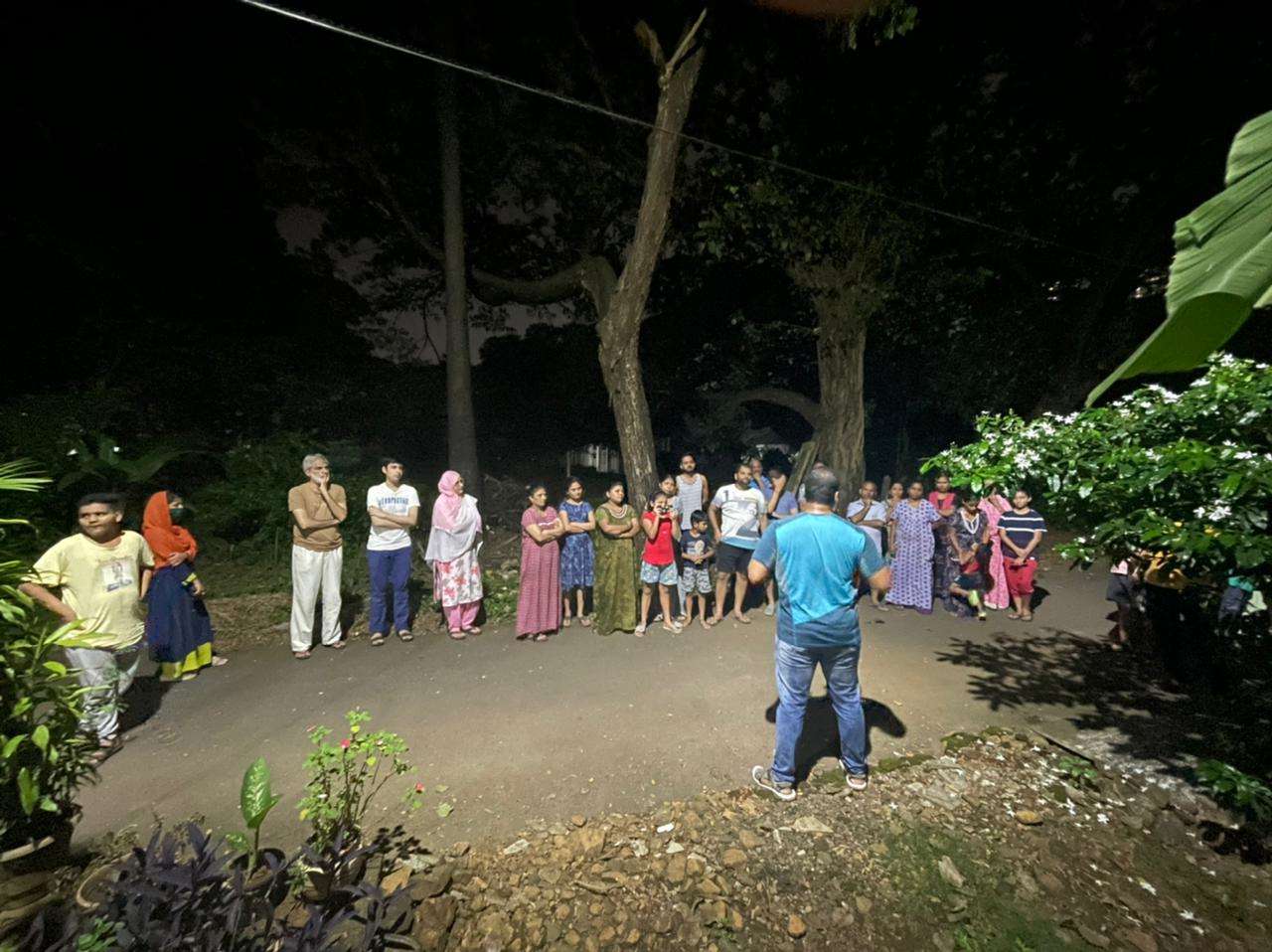The Process of Coexistence
In 2021, as the pandemic wore on, we began resuming in-person awareness sessions (with COVID-19 precautions) on leopard sightings around Sanjay Gandhi National Park (SGNP) in Mumbai, after a year of virtual engagements. At the time, despite increased leopard sightings, there had been fewer panicked calls and demands for trapping leopards, but thankfully, there were no untoward incidents. Then, in the second half of 2021, a series of leopard attacks took place, prompting Forest Department personnel, researchers and volunteers to spring into action to prevent further attacks while addressing the fear and panic among local communities.
Aarey Milk Colony, home to a rich diversity of flora and fauna, has served as a buffer to SGNP, and in June 2021, 812 acres of the colony Aarey Milk Colony was declared a “reserved forest” and integrated with SGNP. There are regular reports of leopard movement from the area. The tribal communities have lived in the area for several generations and report that humans and leopards have coexisted in the area for many centuries.
Last year, the first report of a leopard attack on humans was made towards the end of August. Locals claimed that a young leopard was responsible for these non-fatal attacks. This was “confirmed” through eyewitness accounts, camera trap images, and video footage from Aarey Milk Colony. Unfortunately, sufficient DNA samples were not available to allow for a definitive identification of the individual responsible for the attacks.
This particular individual was venturing close to humans. This is unusual as leopards generally avoid humans. In addition, the leopard seemed to be attacking random people, which often resulted in injuries though none of them were fatal. In total, there were nine non-fatal attacks over a month and many of the victims suffered grievous injuries. Local residents were alarmed by these attacks and panic and pressure mounted on the Forest Department as it mobilised its resources to deal with the situation.
In addition to using cages to trap the leopard responsible for the attacks, awareness sessions were also organised to enable local residents to reduce the risks of conflict with leopards. Political party representatives in the area helped mobilise people for awareness programmes. In addition, the Police Department, especially the station at Aarey Milk Colony, increased vigilance and responded to every report of leopard movement. A dedicated Forest Department team with assistance from local volunteers were deployed in the area to monitor the leopard's movement.
As a clearer pattern of the animal’s movement emerged, the Chief Wildlife Warden of Maharashtra state issued formal permission to trap the individual animal. Only the Chief Wildlife Warden of the state has the authority to trap a leopard, in keeping with Government of India’s protocol to prevent arbitrary trapping of leopards a. Once the permission was granted, trap cages were deployed in the area and monitored regularly.
However, the process of trapping a leopard while also ensuring that people are safe is rather complicated and it took more than a month to trap the suspected animal. This meant that people needed to learn to take precautions to share space with leopards and ensure that both leopards and humans remain safe, so teams were deployed to spread awareness.Over the course of a month, two leopards were captured from Aarey Milk Colony but neither of them matched the photograph and video evidence collected from attack sites, so they were released.
Finally, a third leopard that had been identified as the individual responsible for the attacks, was captured at 5.30am on 1 October. After this, the attacks ceased. However, the series of attacks had generated fear and panic. Constant monitoring and dialogue between the Forest Department and local communities helped people relearn ways to coexist with leopards. Awareness sessions continued in the area till the end of November even after the attacks ceased. Calm finally returned to Aarey Milk Colony.
There are important lessons here. It highlights the importance of a multi-pronged approach to handle this complex interaction between humans and leopards. This approach requires knowledge of leopard behaviour and evidence-based response strategies. Dialogues between stakeholders are important to ensure that everyone is a part of the solution while also ensuring that humans and leopards are safe. In this particular instance, even with the focus on identifying and trapping the animal responsible, we also worked to reduce vulnerabilities to such attacks amongst humans. This included effective waste management, access to sanitation facilities, management of vegetation thickets near human settlements and management of feral animal populations. The Forest Department has already initiated work on these measures along with other government departments and stakeholders. These measures are part of the long-term efforts led by the Forest Department and citizen groups to facilitate human-leopard coexistence in Mumbai.





